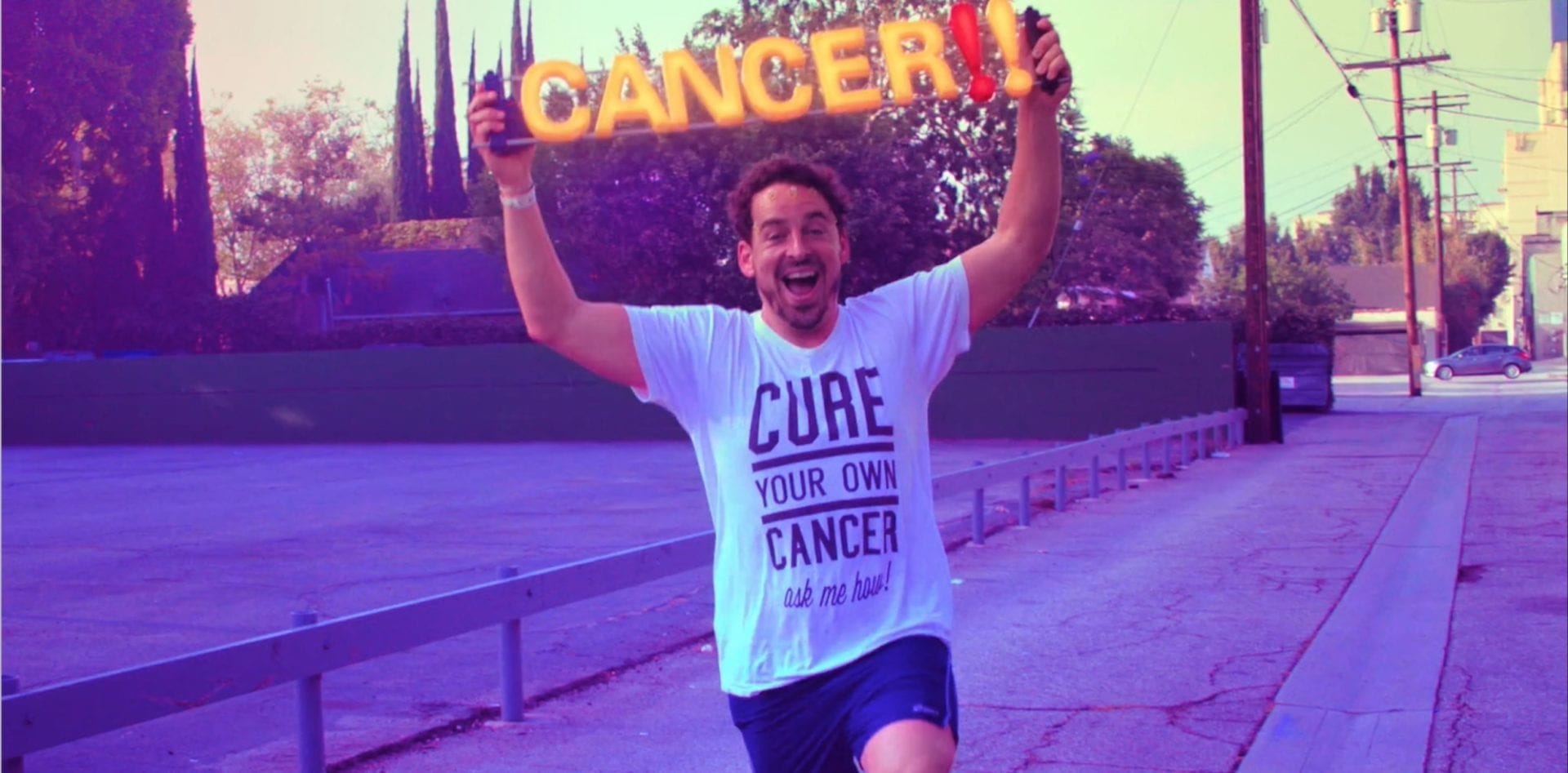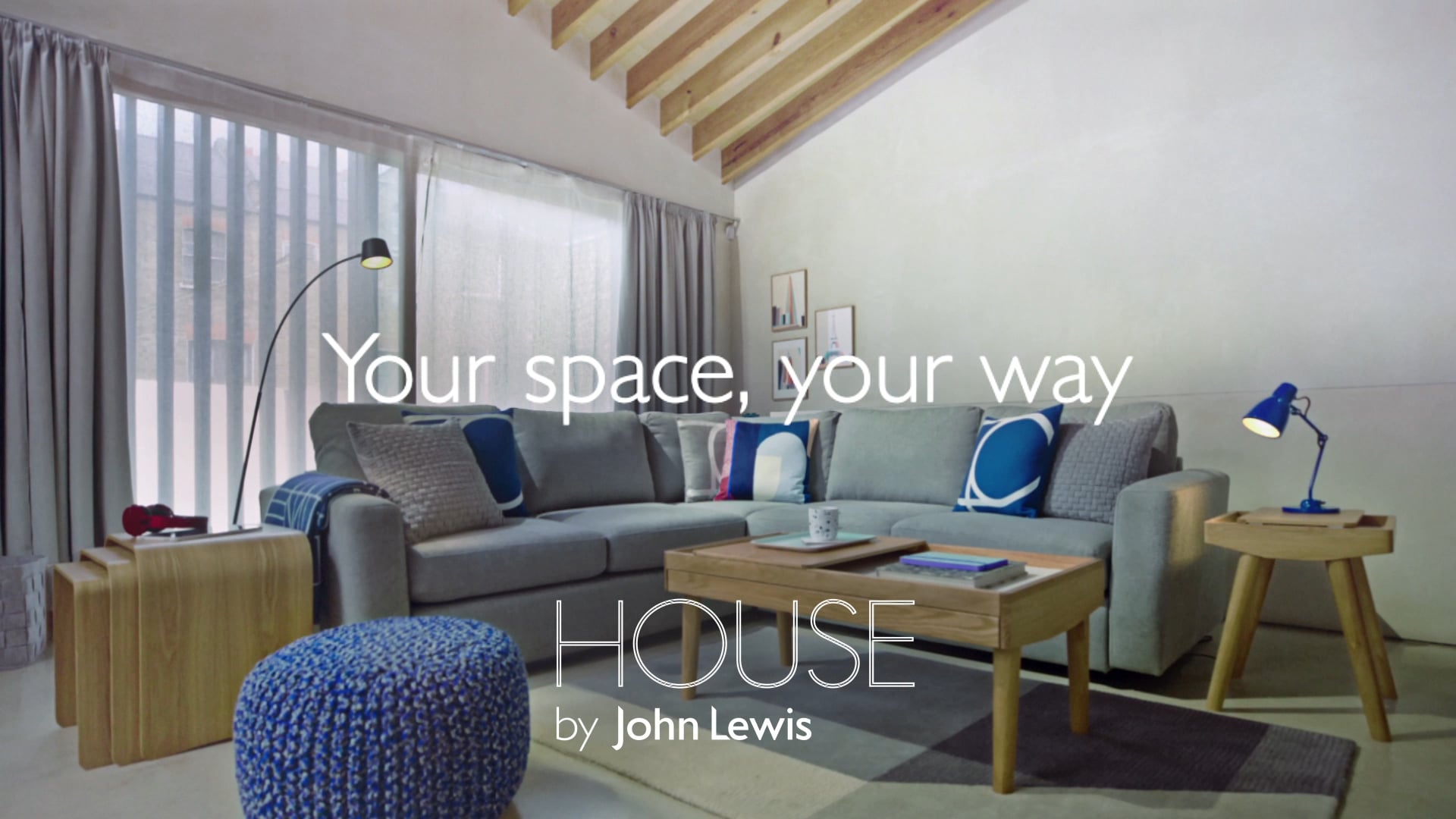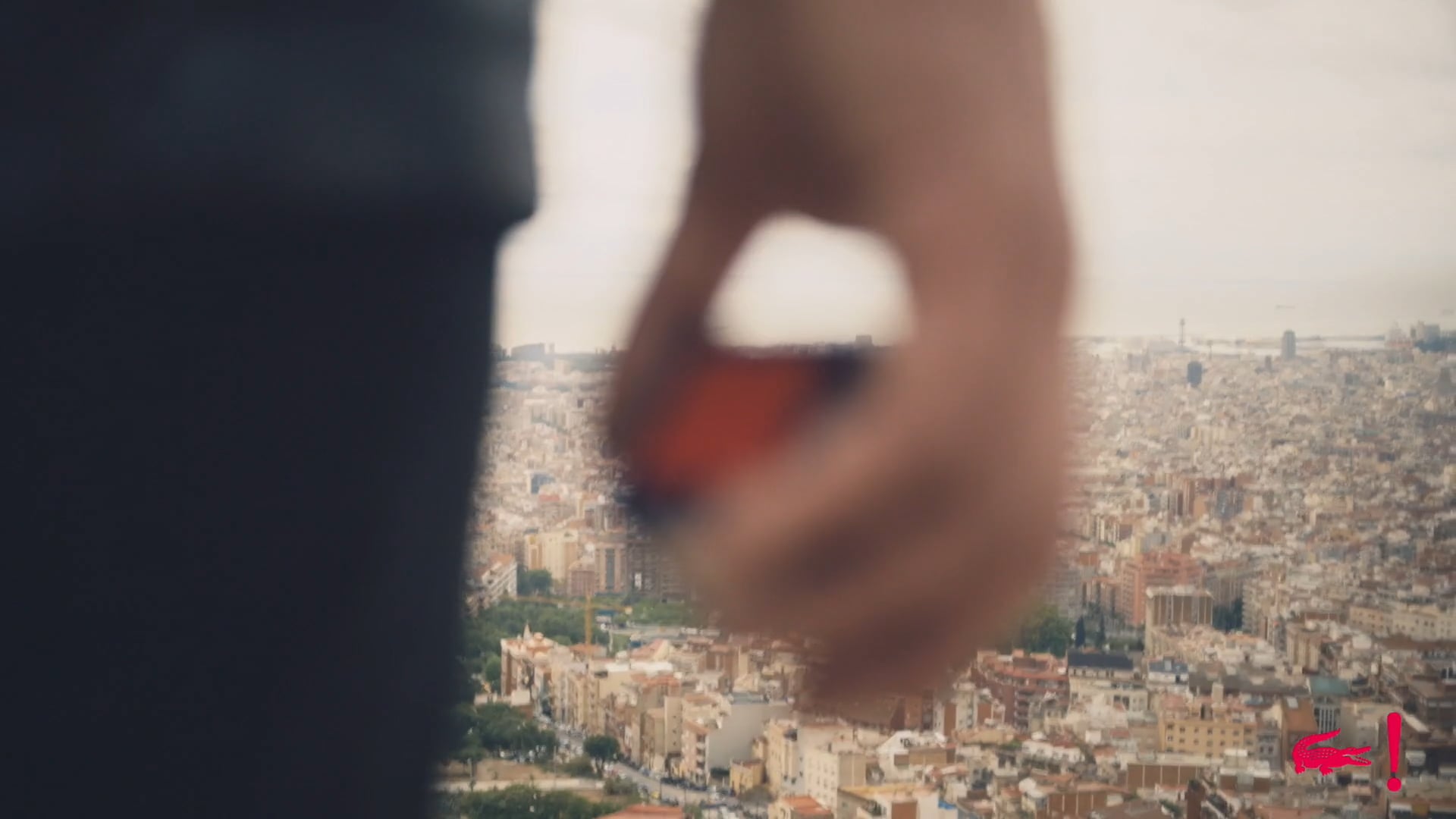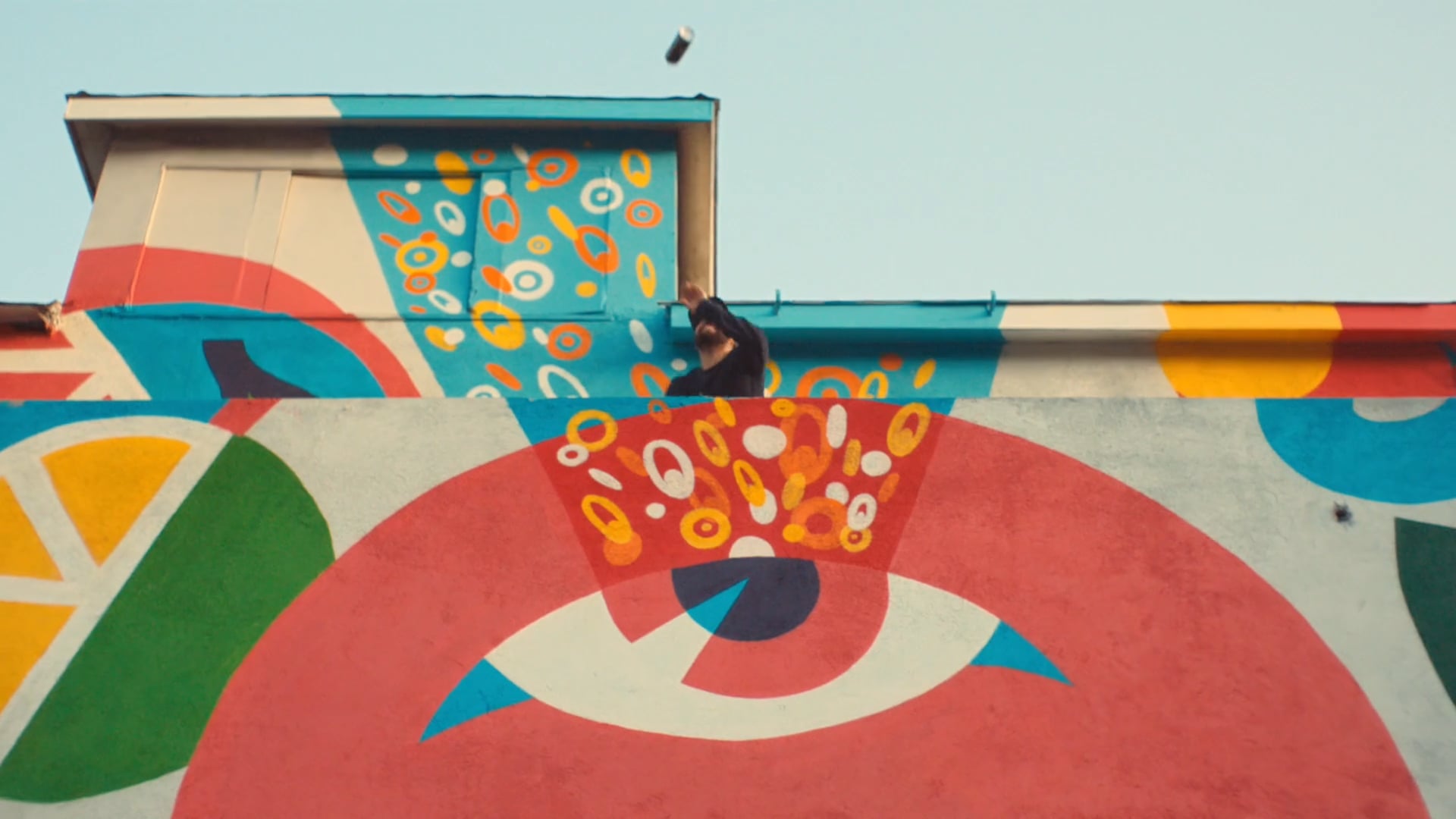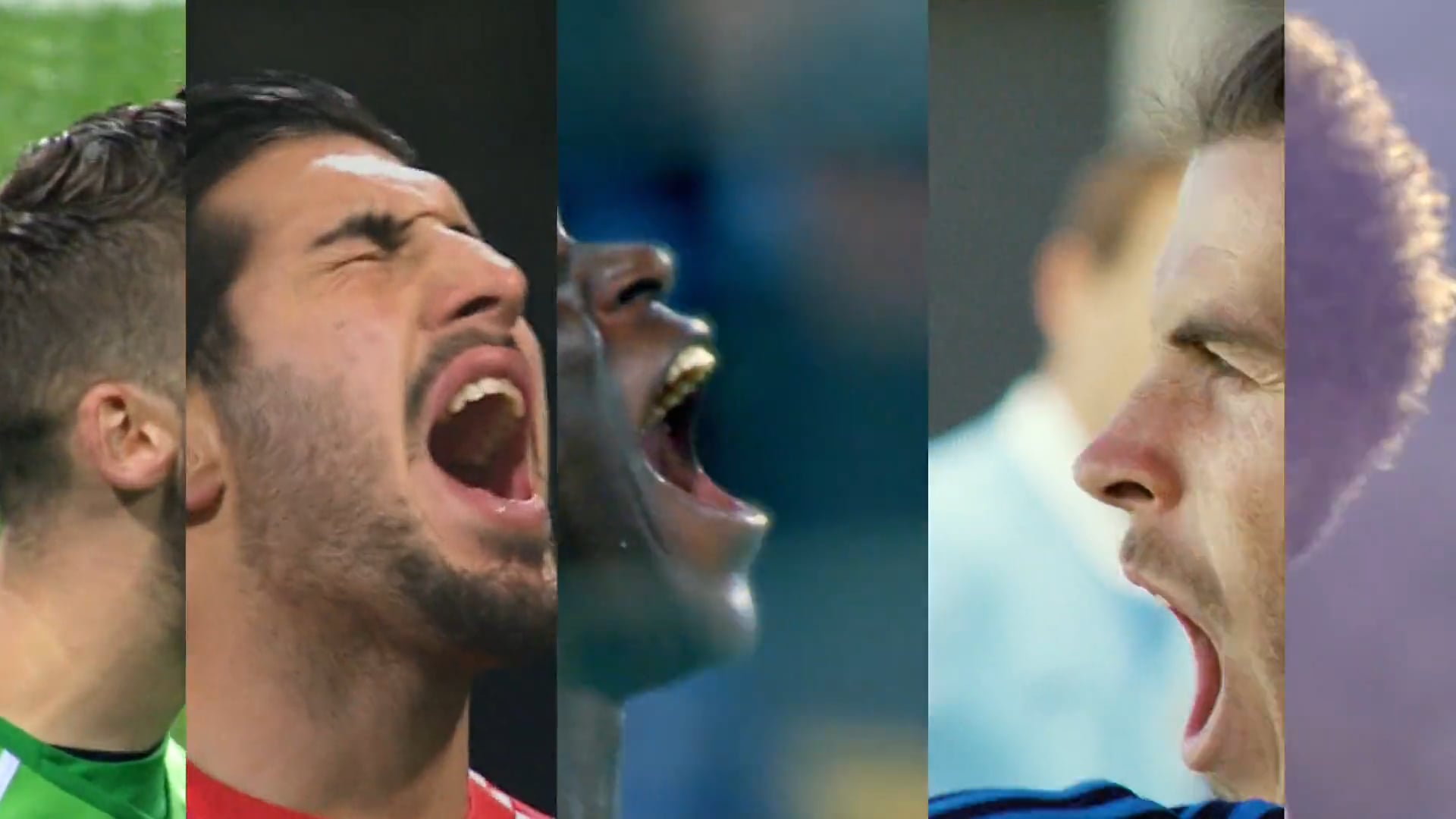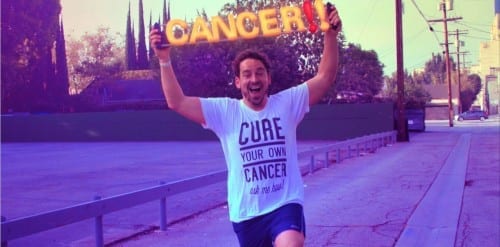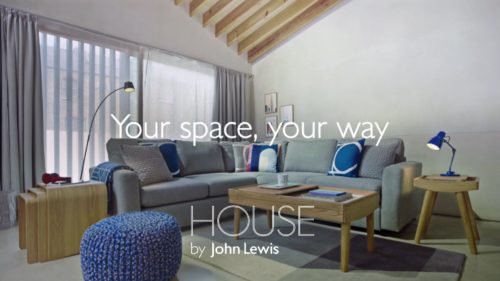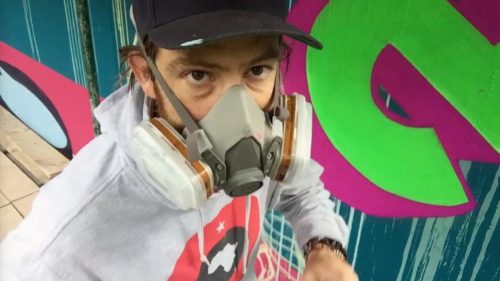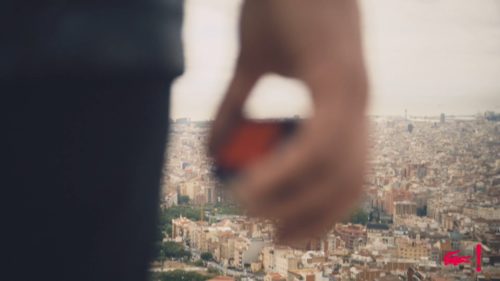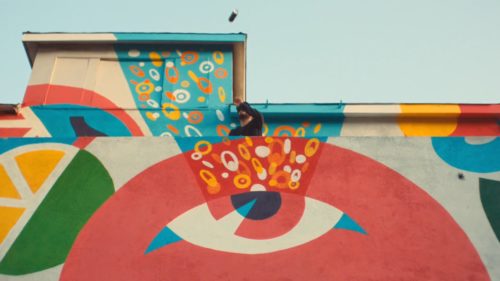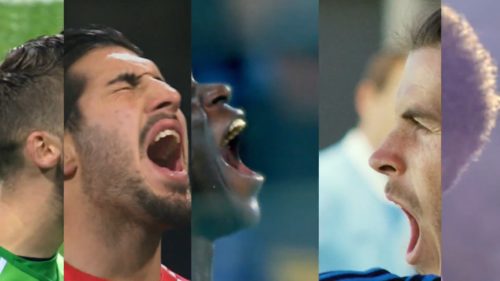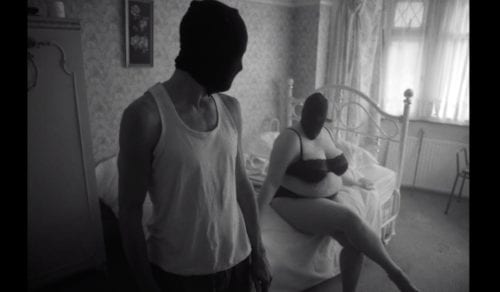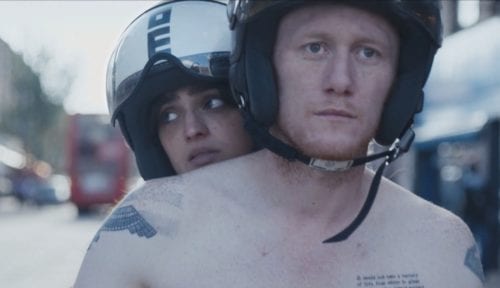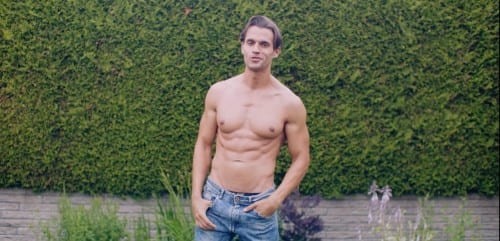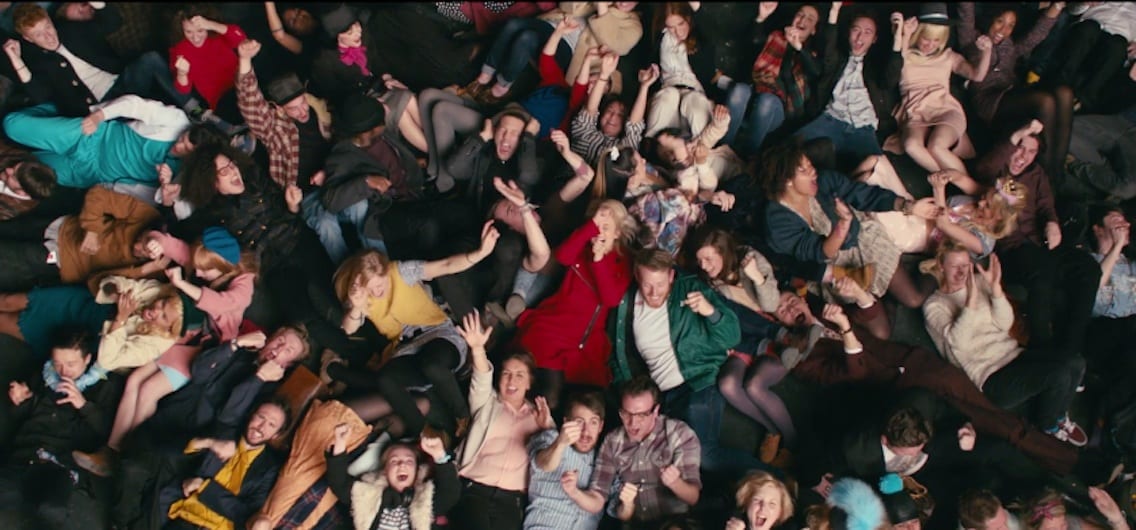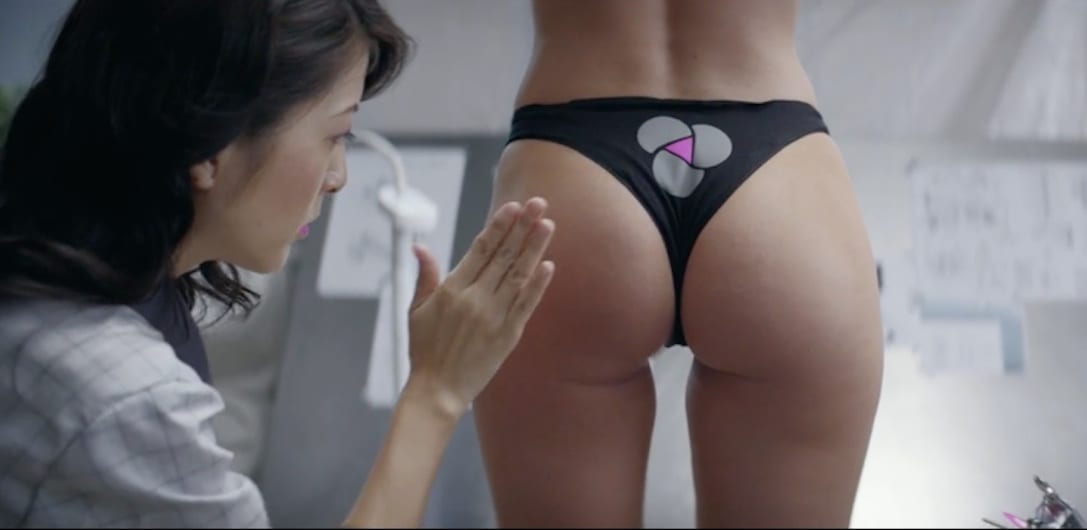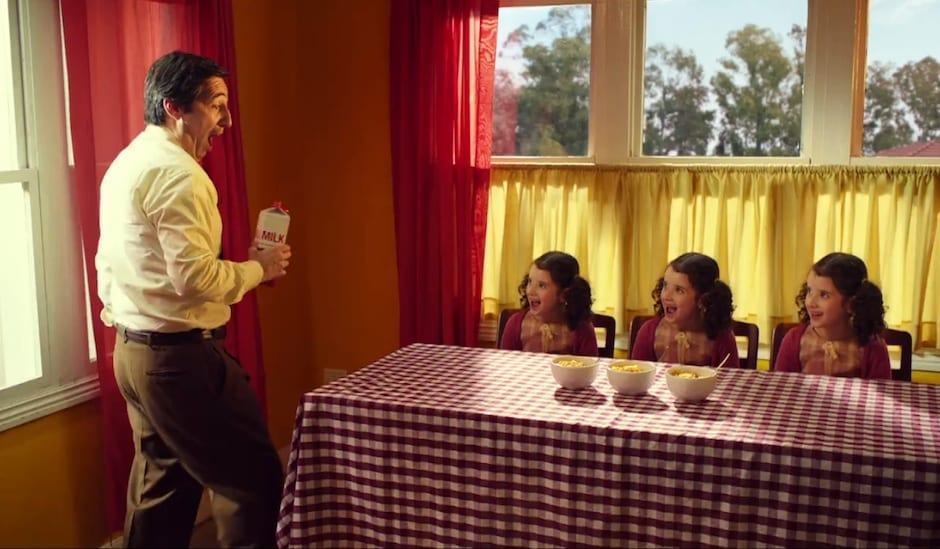I think this is a first. Your film for Cancerful simultaneously makes the hair on the back of your neck stand up at the same time as you’re smiling and feel jolly. The way you’ve created this film gets the story of this extraordinary guy across in such a captivating unschmaltzy way. Please tell us the back story to how you met the Luckiest Man Alive, and about the creative process of making the film.
Chad (the Luckiest Man Alive) is a very good friend of mine who I met about 10 years ago when I was living in LA for a couple of years. He was my doorstep neighbour. In April 2012 Chad was diagnosed with an incurable brain cancer. In the hardest of times, he somehow found ways to keep enjoying life between his five surgeries and became incredibly inspiring to me and to many others, particularly through his blog The Brain Chancery.
He created The Cancerful Foundation, a non-profit foundation dedicated to ‘curing’ cancer one moment at a time. As someone whose cancer is not technically curable, he learnt the huge importance of what he calls the LIFE CURES – “These are things that have the power to make us (The Cancerful) forget about cancer for a moment (or an hour, or a day), and make us feel like regular people enjoying our lives, not just sick people constantly struggling with a terrible disease. A Cancerful Life can still be a Wonderful Life!”
Chad called me one day to give me the bad news that his brain tumour had grown back and that he needed to have another surgery very soon. The fourth one. Having just created The Cancerful Foundation, he needed a film to let people know about it, but with all the risks involved, he was worried he wouldn’t be able to get things done after the surgery, so we had two weeks to make it happen and that’s when the idea came along: Let’s run to brain surgery. Literally.
So I jumped on a plane to LA and we developed the concept together. We made some calls and pulled a few favours to organise a little shoot for the surgery day. A camera, a microphone, a truck and a few devoted people is all we needed! We wanted to shoot it all for real on the day, and we did. Chad ran a few miles, repeating each line a few times so I’d have enough to play with in the edit and we followed him with the camera and the boom on the back of the DoP’s pick up truck… the rest of the story you can watch.
The film helped raise funds to lay the foundations of his next project, CURE MY DAY. Through his experience Chad knows what is most needed for others in similar situations, and he came up with a simple but brilliant idea. So he needs another film to explain exactly what it is, but in essence, CURE MY DAY is a mobile APP that will help enable people to help other people with Cancer – or any other life threatening illness.
We are currently working on the next film together, shooting soon hopefully… I’m doing this to help my friend but I’m also very excited about the idea, which could help so many other people in similar situations. As much as I love directing commercials, it’s always refreshing to do a project of your own, where you’re not trying to sell something to people who don’t need it (the CURE MY DAY App is free by the way 😉
It’s pretty tricky to define your reel – there’s a mix of vfx (thinking of Lacoste) with more in-camera and quick edited work. How would you describe your style?
It can be a tricky reel to define and this has always been a bit of an issue with my reps or anyone trying to sell my work. People like to put a sticker on things and I’m never sure what sticker to choose, as I love trying as many different things as possible.
But if I had to define my work, I’d do it with what I like doing:
-I love capturing genuine moments of spontaneous live action. I love it real and I love it raw.
-I love mixing techniques and manipulating all kinds of imagery – heavy post-production or ‘in camera’ trickery.
-I love a piece with a heartfelt message.
-I love combining all of the above
I love finding ways to make post-heavy work or in-camera effects feel very spontaneous and natural. And in the last few years, I’ve been trying to concentrate on crafting these effects and raw moments around a narrative.
Having come from a more illustration/graphic background where the work is centred around a single image, the possibilities of telling stories opens up when you work on films. Moving forward, I’m trying to focus on keeping my visual approach but using it to service a message. All that said I know for sure that my focus will keep evolving…
Do you write your own scripts? For instance what was the brief for Lacoste and how much did you develop the narrative?
I love it when you get a chance to be part of the concept development early on but it’s not always the case in the commercial world. The Lacoste project was a great collaborative process with the agency (Grey London). They came to me with a concept and a problem to solve – my favourite sort of brief.
They wanted to do a documentary on a new type of professional photographer who had made a career through Instagram. They had also been asked by their client to feature ‘the cube’ – a representation of the Lacoste LIVE bottle.
Their suggestion was to build a big cube like structure in the city but this would have eaten all our budget without giving us enough to build anything that impressive or relevant to our story. I didn’t feel it would fit within the documentary approach we were after so I looked for a way to feature the cube inside our narrative and give it a key place in the film (rather than just an anecdotal feature like a product placement shot).
I came up with the GPS idea, which made the client happy as we could make GPS devices that looked a lot closer (in scale and look) to their product than any kind of cube structure built in the city. The hope was that the cubes wouldn’t feel ‘forced’ into the film as they now had a proper narrative role and they brought a structure to the film. Once we had a structure, we could keep all the freedom needed for the documentary aspect of the project. Then, with that box ticked, both client and agency felt more comfortable to let us get on with our alternative production approach – more gorilla style – allowing us more shoot days than such a budget would normally allow for.
Please describe your childhood.
I had a happy childhood, growing up in a suburb of Paris. I always loved art, and since I could talk I’ve always said that I wanted to be an artist.
In my teenage years, I was deeply into the skateboard and graffiti sub-cultures. I loved (and still love) painting murals – the bigger the better. At the time I also loved the illegal aspect of graffiti and the thrill that came with it. But after a few encounters with the French police and many lengthy community service duties, I focused on more legal projects (bars, clubs, shops, skateparks, etc.) in parallel with my graphic design studies, before moving to London.
What led you to directing?
I never planned to become a director to be honest. Not that it was quick and easy but just not planned. I was doing graffiti and graphic design, but it was hard to make a living from doing graffiti and I was never a great graphic designer. On the side I was quite interested in animation so I explored After Effects and Final Cut Pro.
Doing a lot of freelance work for MTV who were always keen to let people like me experiment with video, motion graphics and any obscure techniques. They didn’t have big budgets but they definitely were more open minded than any other client I had at the time. I used to go out with a mini-DV, mess around with the settings and then throw some weird graphics on it. The live action progressively took a bigger part in my projects and after a few years I guess you could start calling me a director with a crew.
Where did you learn your film craft?
I call it DIY film school. I was part of this first generation of directors who had the opportunity to try things out without a crew and big budgets. A mini DV and a laptop was enough. Nowadays, you could even shoot a feature on a mobile phone. I love that because it has allowed a more diverse array of talent to get into the industry, where before you had to go through film school, or know the right people I guess.
I’m a true believer in happy accidents. Experimenting with every stage of filmmaking was the best way for me to understand what works, what doesn’t and discover unexpected tricks that you maybe wouldn’t learn in film school. You can learn so much from your mistakes and how to fix them.
Your locations seem to be in the States as well as in Europe. Where do you call home? And where are you based for work?
I moved to London in 2000. This is home, this is where my heart is and this is where I’m based for work. I love the very open minded British spirit on a creative level… and in the pub.
I did live in LA for a couple of years and loved it there. In the recent years, I guess I’ve had a style that is well received in the US, so I keep going back and forward between the two.
I love working in the US, but also find it very frustrating sometimes, mostly because of their edit and post-production process which can sometimes exclude the director. This process makes no sense to me. I used to edit most of my work (mainly due to budget at first) and still love the edit process. My directing style comes together in the edit room and I love to sit with my editor all the way through it. So if I’m not invited, I know that – no matter how good the editor is – there is no way he can second guess all the ideas and mental notes I made on set. Now I have also worked with agencies (mostly small ones) being more open to the idea of keeping me around all the way. It happens more often with repeat business as they can see it is in their interest as much as mine, so hopefully…
All of your work seems to be shot on location – we love Perrier with the street art in Paris. Is this a familiar zone for you?
Location definitely! I’m not a big fan of studio shoots and would always push to shoot on location because it forces you to work with and around the location rather than make it work for and around you. Aside from the obvious gain in realism, it creates constraints that pushes you places, and the viewers will subconsciously feel that.
The first things I ever shot were skateboard and graffiti videos. So I guess this is why I was often asked to work on street vibe projects. For once I know what I’m talking about. I always love an opportunity to get my hands dirty and really enjoy collaborating with other artists.
ps: Perrier was shot in LA (not Paris) for the US market 😉
Oh!
What filmmakers have influenced you?
The filmmakers that influenced me the most are the worst ones I think. I remember watching TV as a kid and not understanding why it all looked so fake and contrived (mainly with TV commercials obviously), so when I started directing, one of my main goals was to try bringing authenticity to my work.
On a more artistic level, my favourite film (French obviously 😉 is “La Haine” by Matthieu Kassovitz. I remember watching it the first time and finally getting the feeling of watching something that looked real. There were so many bad attempts at depicting life in the suburbs prior to this film, but this one was the first that wasn’t so contrived.
Another amazing film that influenced me is “Eternal Sunshine Of A Spotless Mind” by Michel Gondry (I know it feels like it right now but I really don’t just watch French cinema!). Dream and memory sequences are one of the hardest things to put to picture and he did it so brilliantly. The first time I properly related to a dream/memory sequence.
To finish (and to make sure I don’t just mention French films!), I have always loved gangster movies – all the classics. I also love Spaghetti Westerns – though the influence into my work is definitely a lot more subtle (except maybe the for Black Crows film which was a bit of an homage to the genre).
Is there anything else you’d like to share?
As a painter/illustrator, you work alone a lot. So when I moved to bigger film projects where I actually had a crew, I really enjoyed the social aspect. Still now, every time I come to set, I am amazed to see so many people working with me on the craft of the same idea. Film making is team work and I love everything that comes with it.
I try to listen to anybody who might have something to say about what we’re doing for example. Some of the best (and the worst) comments I have ever heard have come from the most unexpected crewmembers. Even if their suggestion doesn’t feel right to me, the fact that they are commenting or suggesting something reveals a weakness and gives me the opportunity to question what we are doing. Even a great piece of work can’t be loved by everybody, but everybody should at least understand it and if not, then think again.
LINKS
